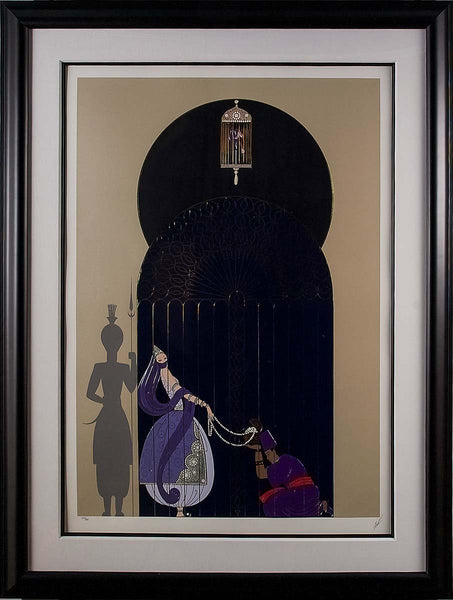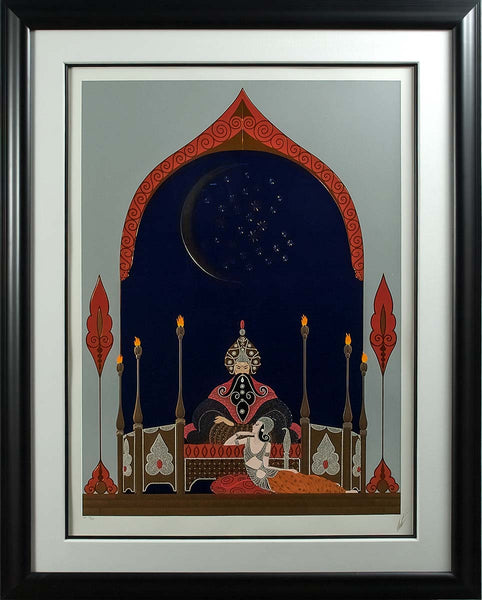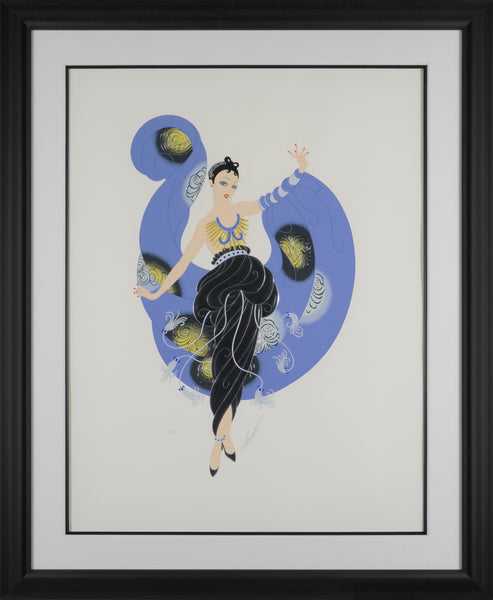About the Work
Fire Dancer is a sculpture sized 6'' x 10 1/2" x 23 1/2" inches, and cast in bronze using the lost wax process.
Originally created in gouache, this image was inspired by Igor Stravinsky's 1910 ballet, Firebird.
The Firebird ballet is based on the Russian folk tale of a magical glowing bird of the same name. The hero, Prince Ivan, wanders into magical gardens where he sees and chases the Firebird. Once caught by Ivan, the bird begs for its life and ultimately agrees to assist Ivan in exchange for eventual freedom. Upon seeing thirteen princesses, Ivan falls in love with one of them and confronts King Kashchei to ask for her hand in marriage. They begin quarreling and Kashchei sends his magical creatures after Ivan. True to his word, the Firebird intervenes, bewitching the creatures and making them dance an elaborate, energetic dance (the "Infernal Dance"). The ballet was also staged by George Balanchine for the New York City Ballet in 1949 with scenery and costumes by Marc Chagall.
About the Artist
Erté was born Romain de Tirtoff in St. Petersburg, Russia on November 23rd, 1892 and was raised amidst Russia's social elite. At the age of five he created an evening gown for his mother and managed to persuade the adults to craft it, they were astounded by the results. In 1912, Romain left St. Petersburg for Paris at the age of nineteen with the aim of becoming an artist. After working with Paul " Le Magnifique" Poiret on several theatrical productions Romain, still under the pseudonym of Erte, began to work more independently. He hand-crafted original costume and fashion designs for many of the era’s most renowned actresses, including Joan Crawford, Lillian Gish, Marion Davies, Anna Pavlova, Norma Shearer, and others. His masterpieces for the stage included extravagant production designs at venues such as New York’s Radio City Music Hall, the Casino de Paris, and the Paris Opera. In 1915 he began his long professional relationship with Harper's Bazaar and created 240 covers for the esteemed magazine. For 6 months in 1916, Erté simultaneously worked with Vogue as well. As a result of his highly publicized success, Erté would later be called the father of the ‘Art Deco’ movement.






